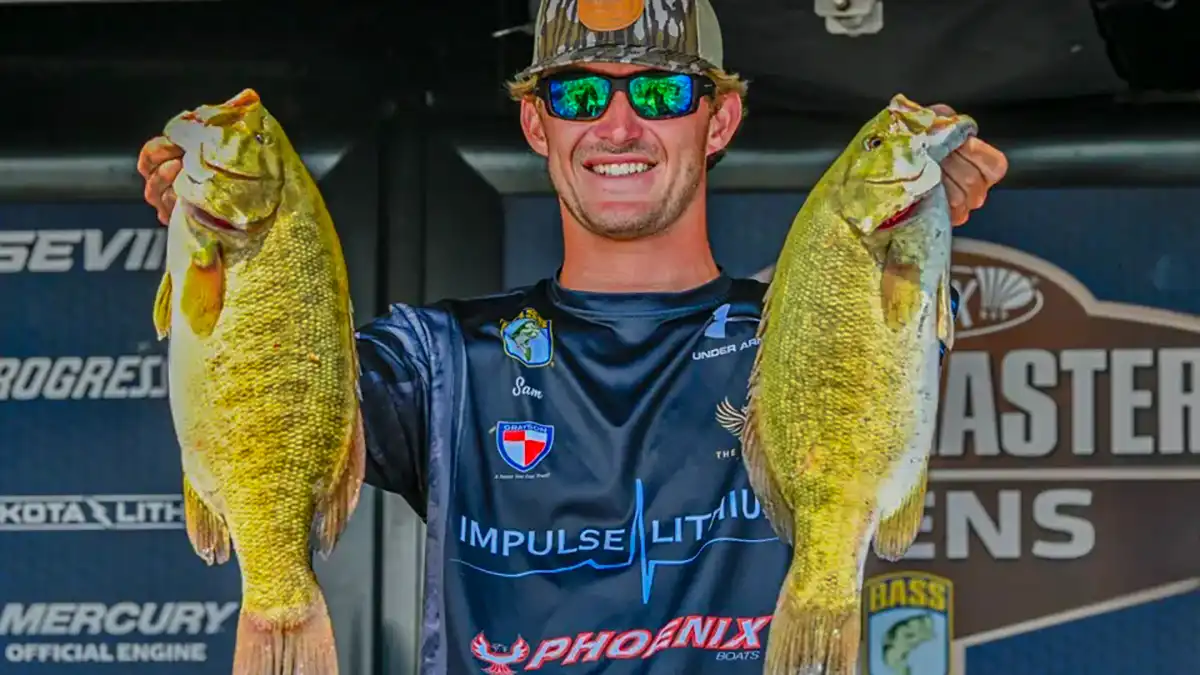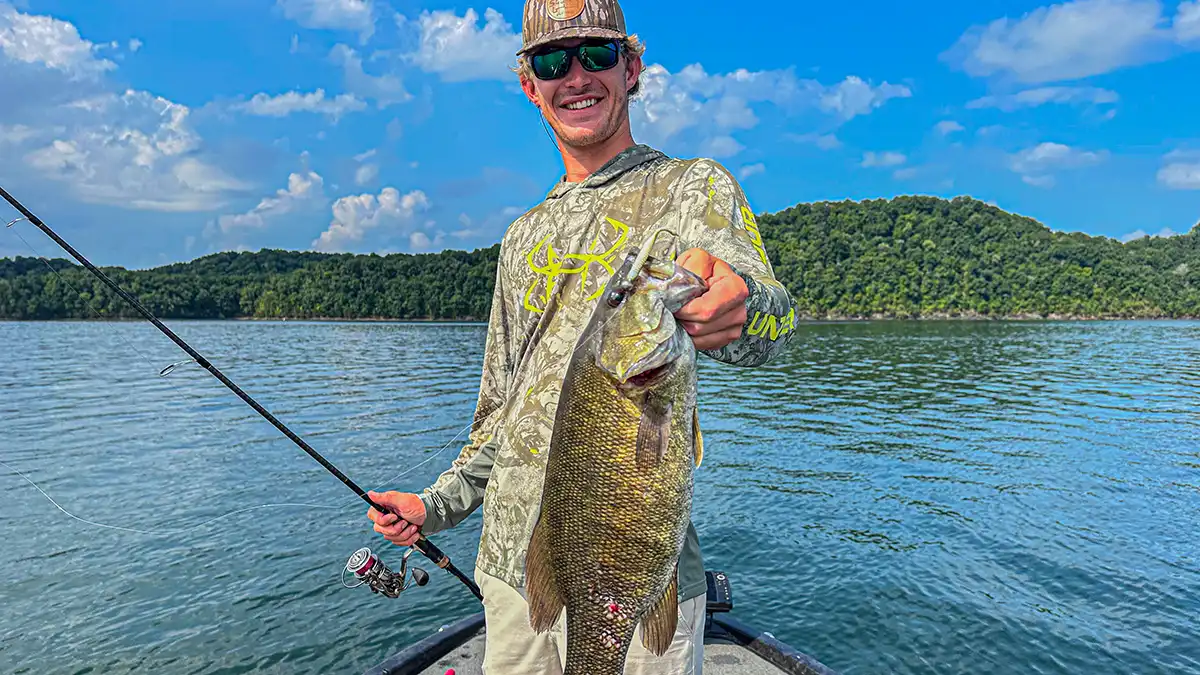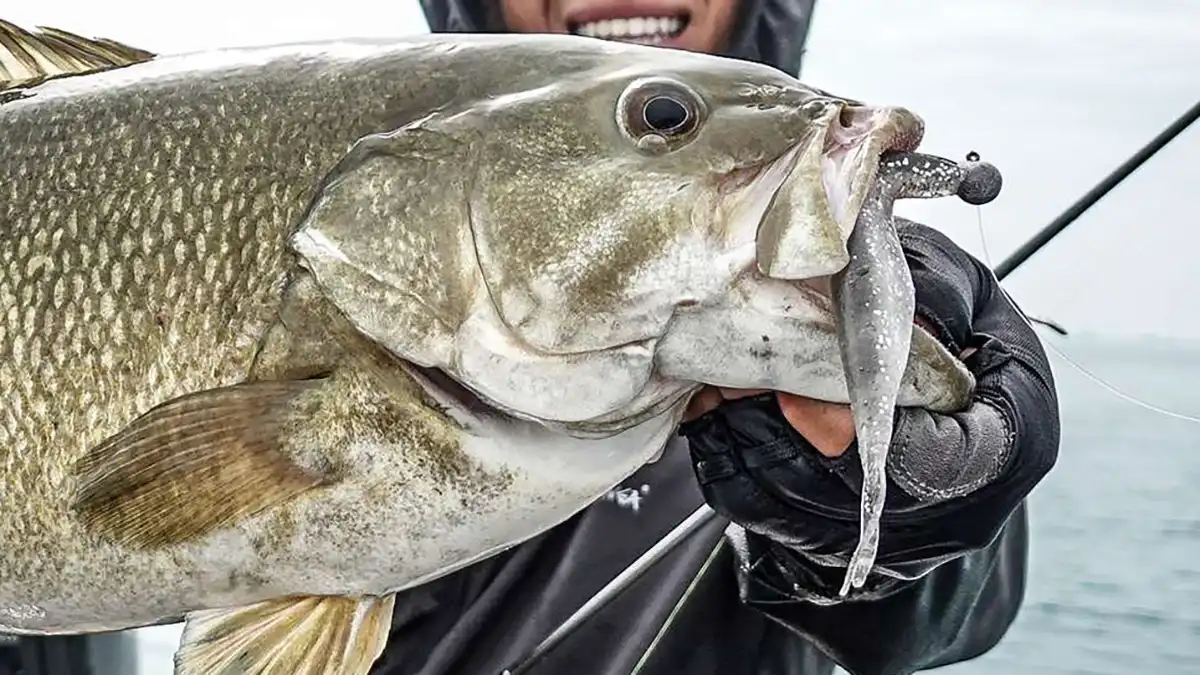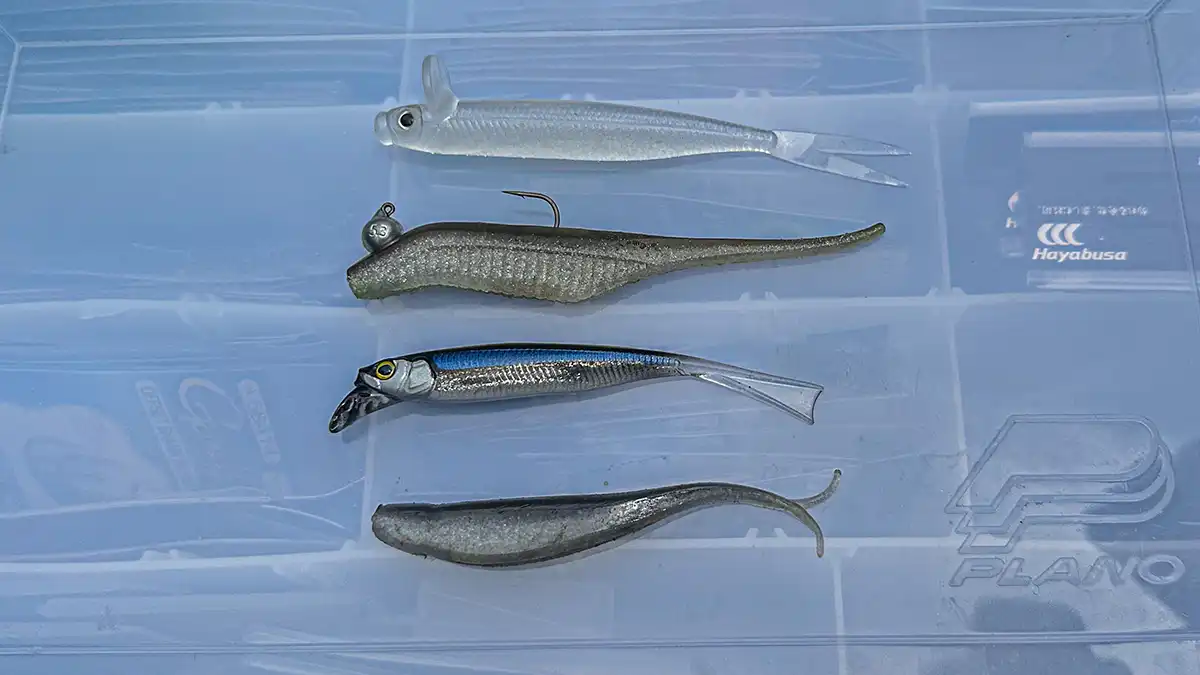Warning: Undefined variable $k in /home/nginx/domains/wired2fishcom.bigscoots-staging.com/public/wp-content/themes/understrap-child-0.6.0/functions.php on line 984
Warning: Undefined variable $k in /home/nginx/domains/wired2fishcom.bigscoots-staging.com/public/wp-content/themes/understrap-child-0.6.0/functions.php on line 987
I’ve been infatuated with northern smallmouth ever since my first trip to the St. Lawrence River. My first trip up north happened in 2016, and since then I’ve spent numerous summers up north perfecting my skills. My first few trips didn’t involve many electronics as I hadn’t dabbled in forward facing sonar yet, however recently I’ve begun implementing these electronics throughout my trips. This technology has been super effective in targeting northern smallmouth, especially throughout the post spawn period. This feature highlights everything you need to know in order to locate and catch post spawn smallmouth using a jig head minnow.

HOW TO LOCATE FISH
Compared to the majority of bass we target in the southern united states, these fish are fairly susceptible to artificial lures. This means they are far more willing to bite than most bass we’re used to here in the south. While this may be true, it doesn’t make locating them any easier. After smallmouth finish up the spawn they become fairly nomadic, constantly searching for food such as gobies or perch. This can make locating them fairly difficult as their constantly changing locations. Given their nomadic nature, I like to start by checking pinch points or other high percentage location that bass might reside.
Targeting major points, humps and drains are great location to start. Unlike summer fishing in the south, the fish aren’t typically grouped up in giant numbers. This means they don’t stand out as much on your electronics. This causes me to rely more on forward facing sonar as apposed to side and down imaging. This technology does a much better job at showing you one or two fish compared to thirty or forty. Once you locate one bass however, there are typically more close by. One of the best ways I’ve found to locate these fish is by hopping on the trolling motor and covering water. This is an easy way to quickly see what caliber fish reside in your area.

THE IMPORTANCE OF BAIT
While the majority of post spawn smallmouth are extremely nomadic, there is one factor that can force these fish to stay put. The presence of bait whether it be perch, crayfish or gobies can cause these bass to congregate and stay in one location until that forage dissipates. Locating this force is often key to having consistent success on these northern fisheries, especially during the post spawn. There are a few different ways to locate this forage, and using your electronics is likely the easiest and most productive method. Whenever I’m looking for baitfish such as perch, side and down imaging is what I primarily rely on. Idling around contour changes and other primary location is a great place to start, and I often won’t cast until I locate a pod of bait.
Gobies and crayfish on the other hand typically reside around rock and other types of hard structure. Similar to locating perch, side and down imaging is an easy way to find these locations. I typically look for rock and other hard spots located in between grass and other types of vegetation. Smallmouth often roam around these locations in search of this type of forage. While all three of these food groups are responsible for congregating smallmouth, I find the most success targeting bass feeding on perch whenever I’m using a jig head minnow.

READING THE FISH
Reading the fish is key to delivering a successful presentation. The mood and tendencies of these fish depend on a few different factors, the largest being their preferred forage. Whenever bass are feeding on bottom dwelling forage such as gobies or crayfish, their often facing down. This can make calling them up on a minnow style bait slightly more difficult. In order to catch these fish you must swim your minnow directly over their head, often keeping it 6 inches to 1-foot above them. These fish typically cruise along the bottom in this scenario, often making them slightly harder to notice on forward facing sonar. I still use a minnow style bait frequently in these scenarios, however you have to be far more accurate than you would fishing for a suspended bass.
Bass feeding on perch and other floating baitfish however are much more susceptible to mid strolling techniques. These bass are often suspended in the water column and actively looking for some sort of floating baitfish. This makes them far more susceptible to a minnow style presentation. It also causes the bass to travel further distances to eat your bait. My favorite method for getting these bass to react is by throwing it over the fishes head, and slowly swimming it over them until they react. Once the bass engage on your lure, increase your retrieval speed simulating a fleeing baitfish. Be sure not to pause your retrieve as this often causes bass to flee from your lure. Once you have the proper cadence, the next step is determining the correct minnow and jig head combination for your desired application.

LURE SELECTION
With the extreme popularity this style of fishing has received over the last year, choosing the right jig head and minnow combination has become even more crucial. While color does play a roll, I’m more concerned about size and weight. I determine jig head size based of the depth and speed of which bass are traveling. The lighter the head you can get away with the better, however you don’t want it to be so light that you can’t effectively hit them. If bass are high up in the water column I typically throw either a 3/16 or 1/4-ounce jig head, however if they are deep or moving quickly ill throw a 3/8 or 1/2-ounce. These are the four basic sizes I use, and they seem to cover the vast majority of scenarios you might encounter. A few of my favorite jig heads include the Queen Tackle Live Sonar Tungsten Jighead and the Keitech Super Round Tungsten Jig Head.
Minnow size however is slightly harder to determine. I base this off how the fish reacts to my lure. I typically start with a 5-inch minnow, however ill increase or decrease my size based off their reaction to my bait. Another easy way to determine the correct size is by paying attention to the forage they are feeding on. I typically try and match the hatch as closely as possible as this seems to get the best reaction out of most bass. I generally stick with anything between a 3 and 7-inch minnow depending on these two factors. A few of my favorite minnows include the Strike King Baby Z-Too and the Z-Man Scented Jerk Shadz.
Mid strolling for post spawn smallmouth can be a super productive technique that leads to some fun days on the water. I’ve had an extremely successful summer practicing this technique, and I’m confident you will find success if you follow these simple tips. If your looking to catch a few extra smallmouth this summer, I highly recommend incorporating the mid strolling technique into your every day arsenal.












